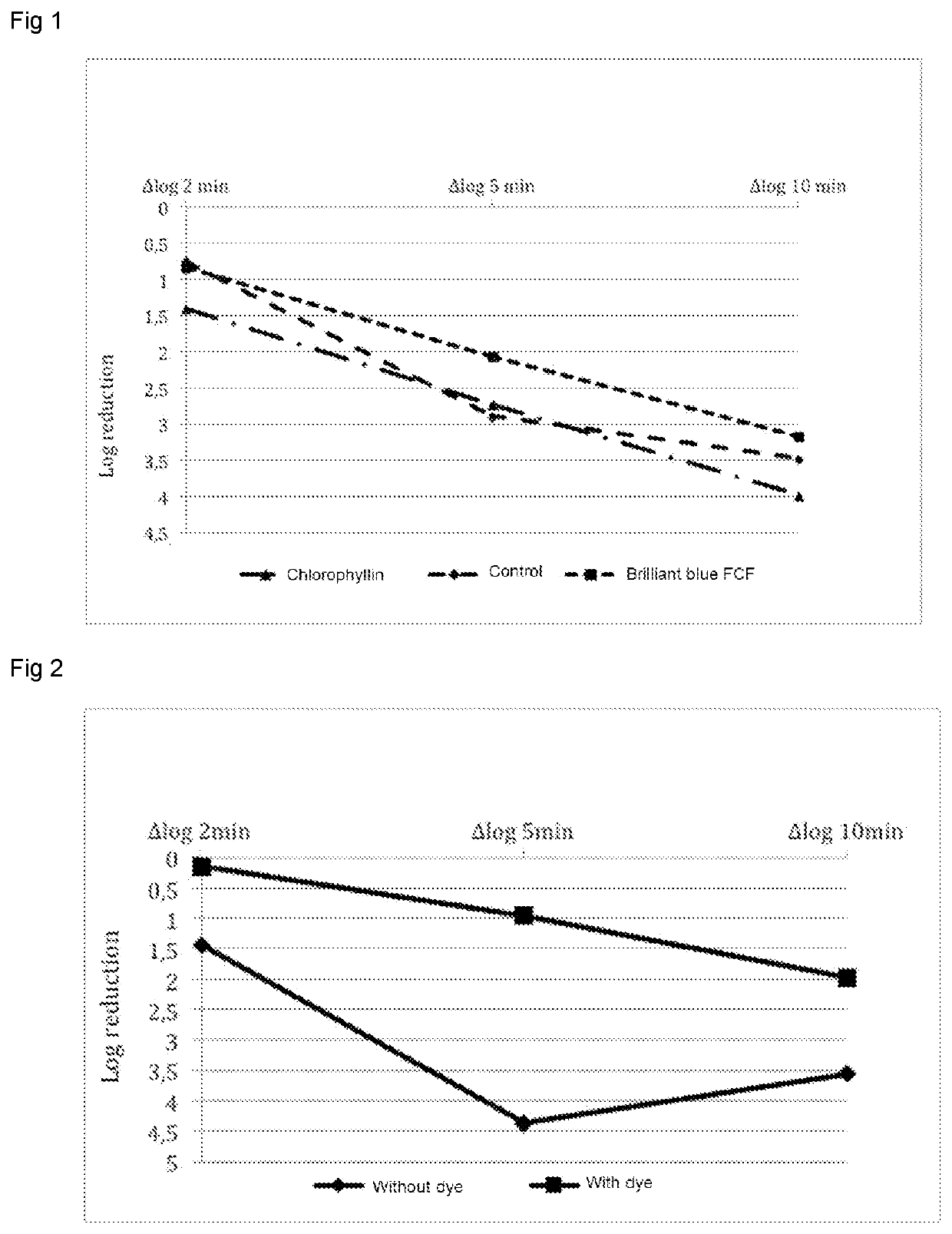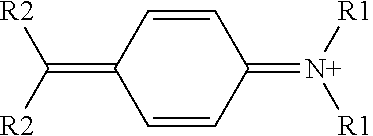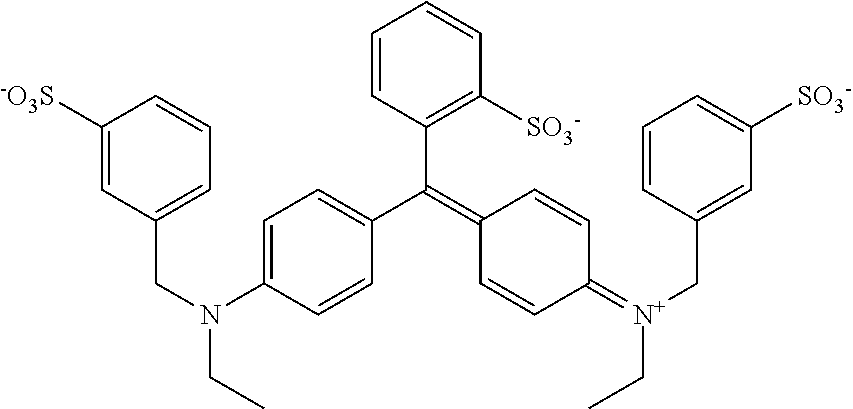Composition of microorganisms indicating decontamination
a technology of decontamination and microorganisms, applied in the field of decontamination process validation, can solve the problems that validation cannot be done with pathogenic microorganisms, and products of plant origin, such as almonds or spices, are often contaminated, so as to increase the resistance of decontamination process and extra safety margin
- Summary
- Abstract
- Description
- Claims
- Application Information
AI Technical Summary
Benefits of technology
Problems solved by technology
Method used
Image
Examples
example 1
yes: Chlorophyllin and Brilliant Blue FCF
[0067]Method: The Enterococcus faecium strain in dry form was mixed with an inert support (maltodextrin) and with each dye individually. The subsequent mixture is placed in an Eppendorf tube in a dry bath at a temperature of 100° C. Samples were taken at 2, 5 and 10 min and cell counts were performed on TSA (Trypticase Soy Agar) medium for 24 h at 37° C.
[0068]The results are shown in FIG. 1.
Example 2: Comparison of E. faecium Compositions at 100° C.
[0069]The heat resistance of E. faecium with or without the dye brilliant blue FCF is compared in three forms of compositions: fermentation must (Must), without support (Pure) and on inert support (Support).
[0070]Must: addition of 3% of blue dye powder to 5 mL of fermentation must in a sterile jar. Vortexing for homogenization, distribution in tubes and heat treatment.
[0071]Pure: addition of 3% of dye to 5 g of pure lyophilisate in a sterile jar. Vortexing for homogenization, distribution in tubes ...
example 3
onfat Dried Milk NFDM for 3 Strains at 90 and 100° C.
[0075]The test is performed for the following 3 strains: E. faecium ATCC 8459, P. agglomerans CNCM I-5055 and A. pascens CNCM I-5181.
[0076]Addition of 10% of pure lyophilisate of the strains to 5 g of maltodextrin. Vortexing for homogenization. Addition of 3% brilliant blue FCF dye. Vortexing. Addition of 1% of the dyed strain mixture diluted 1 / 10 to 5 g NFDM. Vortexing. Deposition of 0.1 g in Eppendorf tubes then heat treatment of the tubes in a dry bath at 90 and 100° C. for 2, 5 and 10 minutes
[0077]The results are given in Table 2.
TABLE 2Log loss at 90° C.Log loss at 100° C.25102510StrainminminminminminminE. faeciumWith Dye0.510.360.460.360.591.29ATCC 8459Without Dye0.41.652.650.111.63.1P. agglomeransWith Dye0.070.070.370.130.670.72CNCM I-5055Without Dye0.681.281.180.541.321.53A. pascensWith Dye0.060.460.620.260.351.82CNCM I-5181Without Dye0.670.840.970.81.892.75
example 4
lack Pepper for 3 Strains at 90 and 100° C.
[0078]The test is performed for the following 3 strains: E. faecium ATCC 8459, P. agglomerans CNCM I-5055 and A. pascens CNCM I-5181
[0079]Addition of 10% of pure lyophilisate of the strains to 5 g of maltodextrin. Vortexing for homogenization. Addition of 3% of brilliant blue FCF dye. Vortexing. Addition of 1% of the dyed strain mixture diluted 1 / 10 to 5 g of black pepper followed by a spray of wet fixing agent for good adhesion. Mixing with a sterile spatula. Drying 2 h. Deposition of 0.2 g in Eppendorf tubes then heat treatment of the tubes in a dry bath at 90 and 100° C. for 2, 5 and 10 minutes
[0080]The results are given in Table 3.
TABLE 3Log loss at 90° C.Log loss at 100° C.25102510StrainminminminminminminE. faeciumWith Dye0.310.821.461.351.372.19ATCC 8459Without Dye0.911.433.391.050.915.6P. agglomeransWith Dye1.121.61.771.261.452.14CNCM I-5055Without Dye1.151.752.881.843.413.95A. pascensWith Dye0.590.760.850.270.640.85CNCM I-5181Withou...
PUM
| Property | Measurement | Unit |
|---|---|---|
| weight ratio | aaaaa | aaaaa |
| temperature | aaaaa | aaaaa |
| temperature | aaaaa | aaaaa |
Abstract
Description
Claims
Application Information
 Login to View More
Login to View More - R&D
- Intellectual Property
- Life Sciences
- Materials
- Tech Scout
- Unparalleled Data Quality
- Higher Quality Content
- 60% Fewer Hallucinations
Browse by: Latest US Patents, China's latest patents, Technical Efficacy Thesaurus, Application Domain, Technology Topic, Popular Technical Reports.
© 2025 PatSnap. All rights reserved.Legal|Privacy policy|Modern Slavery Act Transparency Statement|Sitemap|About US| Contact US: help@patsnap.com



